.
Long before the Resort and golf course, we had the very old History Coeur d’Alene Idaho 1800’s
.

.
The Very Old History Coeur d’Alene Idaho 1800’s begins with the first white people traveling over the Rocky Mountains into the Inland Northwest in the early years of the 1800’s. They were the Fur traders and explorers, bringing with them their faithful French-speaking Iroquois scout Indians.
.
Entering into the territory of a native Indian tribe called the “Schitsu’umsh.” This land was their native home in a beautiful green space where a river entered the lake.
.
As soon as the white man arrived they got down to the business of trading. The new arrivals quickly realized they were dealing with a bunch of Indian traders as shrewd-as-serpents. And they nicknamed the “Schitsu’umsh” tribe “Coeur d’Alene”, meaning “heart of an awl” or “pointy hearts” and the name stuck.
.
As more and more white boys came into the land they brought a bunch of white man diseases. And the Coeur d’Alene Indians became sick. By the middle of the 19th century, the tribal Indians population had been reduced by almost eighty percent.
.
The Coeur d’Alene Chief named Circling Raven had a vision of men in black robes showing up someday to heal their broken spirits. Father Pierre-Jean Desmet and his troupe of Catholics showed up in their black robes and arranged to meet with the Coeur d’Alene Tribe. They meet with the Indians at Yap-Kheen-um (“the gathering place”).
.
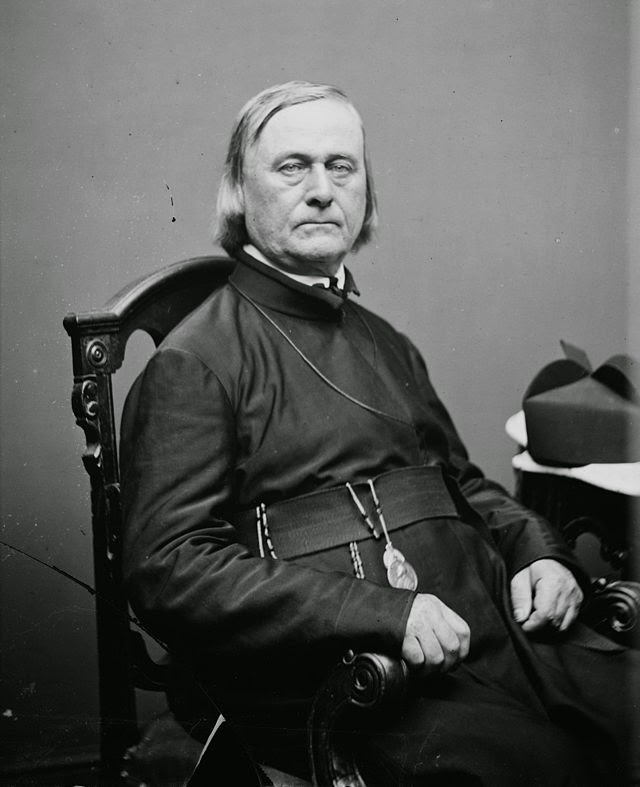
.
The meeting went well and Father DeSmet decided to bring the troupe of Catholics east, over to the Coeur d’Alene River. Where they built what is now Idaho’s oldest standing building, the Cataldo Mission.
.
The Catholics began teaching the natives some white man lessons, like “what Jesus Christ is all about.”
.
.

.
Everything was going well up until the 1850’s when the Indians were getting upset because too many white people were moving into their land. This is when the US Government decided it was necessary to round up the Indian and put them on a reservation so they wouldn’t upset all the white folks.
.
General William T. Sherman, came to Yap-Keehn-um from back east in 1877 and threatened the Indians to stay on their new reservation or they would be killed by American guns. Sherman brought over a bunch of his military men and they built Fort Coeur d’Alene (it was later named after Sherman), which consisted of 52 military buildings.
.
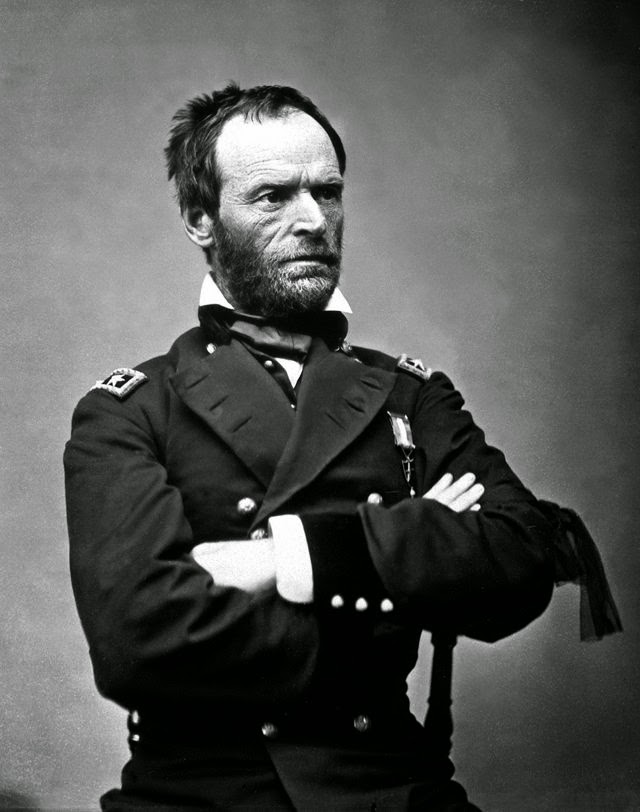
.
Soon, the soldiers’ families started arriving in the area. People were coming by train to the nearest train station up in Rathdrum. Then they would catch a horse-and-carriage down to Coeur d’Alene for some lake time fun.
.
Before long, people got tired of the long horse and carriage rides and in 1886, train tracks were built that led directly to Coeur d’Alene Lake from Rathdrum near what is now Independence Point.
.
Coeur d’Alene’s first year as an official city was in 1887, and only around 40 people took residence within city limits. This same year Coeur d’Alene constructed some important new buildings. Coeur d’Alene’s first church was the Fort Sherman Chapel, which still stands today and is used for historical tours. In the back of the first chapel was Coeur d’Alene’s first school.
.
The cities first sawmill was also constructed in 1887 called Saginaw Mill, where the Coeur d’Alene Resort is located today. The Saginaw Mill burned down after just two years and was soon replaced by the Coeur d’Alene Mill, which also burned down after two years, and was replaced by another mill which also went up in flames.
.
Steamboats were added to Lake Coeur d’Alene to transport necessary objects to the other side of the lake. The Steamboats also took visitors for the ride so they could catch a little relaxation, sunshine and take in the beautiful scenery.
.
The Coeur d’Alene Tourism Industry was born in 1887.
.
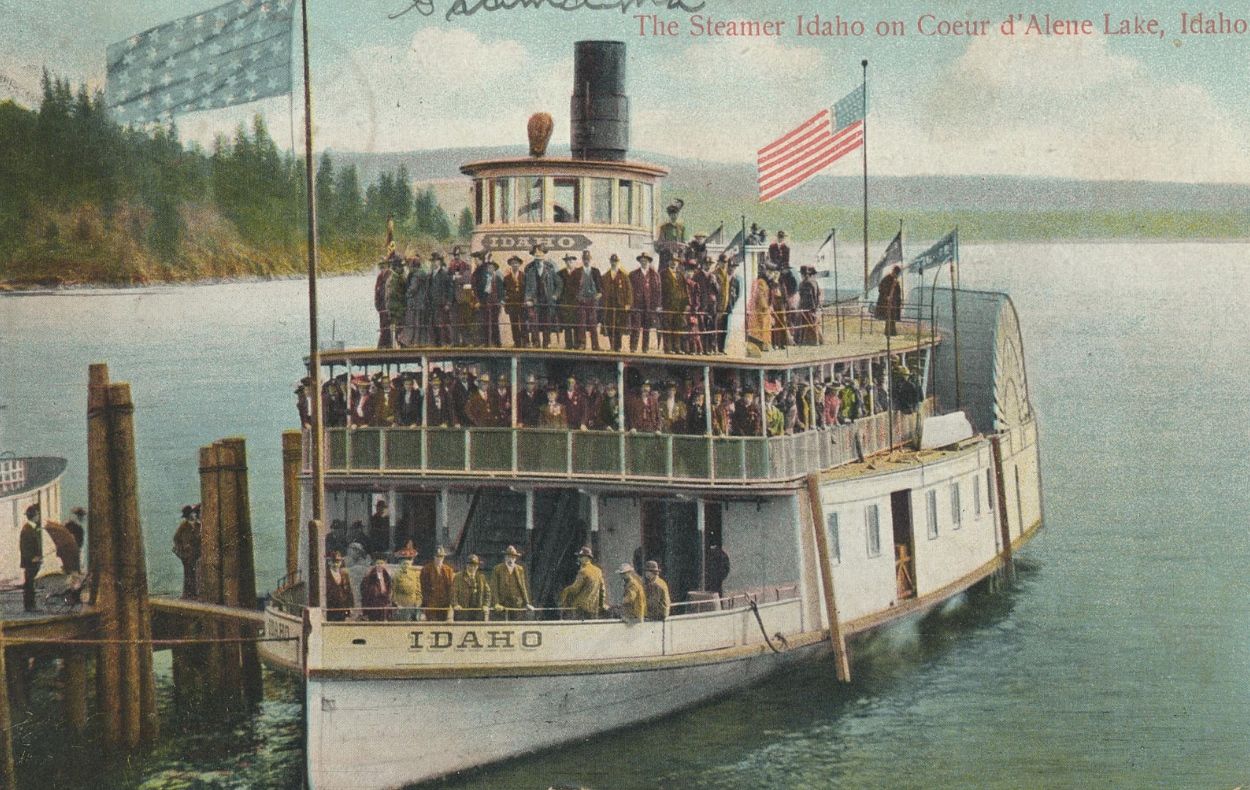
.
Around the same year, 1887, Mr. V.W. Sander became Postmaster General of CDA and was also a “dealer in general merchandise” (dry goods, boots, hardware, groceries, ). At Mr. Sanders merchandise store on the northwest corner of Sherman Avenue and 3rd Street, which is today, the Painter’s Chair Art Gallery. Sanders beach is named after Mr. V.W. Sanders.
.
After 1887, the town was getting populated with people and crazy things started going on. A favorite pastime was to go to the local pharmacy with the cash you had earned logging or mining and buy varieties of crazy concoctions that were sold as “Health Supplements.” But we’re just feel good drugs made of 50% alcohol and fortified with nutrient-rich supplements called cocaine and opium.
.
Mr. Silas Smith was the town pharmacist, whose shop was located on the north side of Sherman Avenue, near the fort. His sales pitch: “A Full Line of Fresh, Pure Drugs Always on Hand”. A little headache? Period Pains? Feeling a bit under the weather? Mr. Smith would sell you something that, if taken at the correct dosage, would make you so stoned you’d forget about your aches and pains.
.
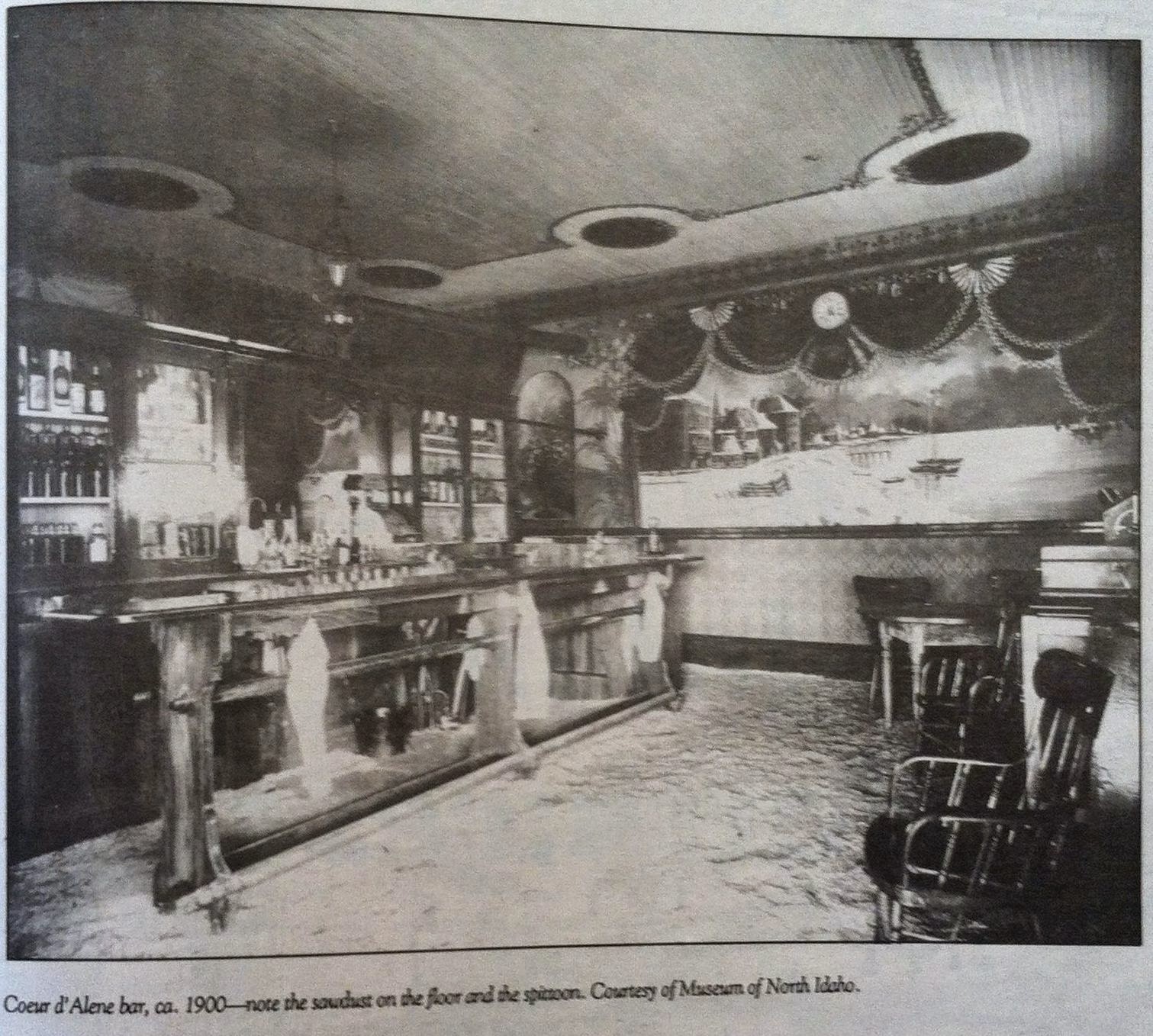
.
The entire population of Coeur d’Alene at the time (outside of the military fort) had nothing better to do than get totally stoned and squander away their cash on gambling, hookers, and cocaine. With some robberies and murder thrown in. It seems that the residents of Coeur d’Alene had a lot of stress that came with nearly dying on the job every day in the pre-OSHA days of the logging and mining industries. So who could blame them for needing a constant flow of booze, hookers, and bloodshed?
.
Carroll’s Variety store was an establishment that sat on the northeast corner of Mullan and 4th, at the base of Tubbs Hill (back when Mullan Ave ran through what is now McEuen Park). The owner James “Fatty” Carroll, had the place staffed by bartender A.J. Coffman and pianist James C Smythe. Smythe was basically the 1887 equivalent of a piano man superstar.
.
Fatty Carroll was a “slimy” figure in the early Wild West days of Coeur d’Alene. He possessed a combination of an entrepreneurial spirit and a criminal mind. Carroll’s Variety served up a sinful smorgasbord of gambling, prostitution, and alcohol in one handy location. And the heavy use of cocaine, heroin, and other mood-altering drugs that made his establishment very popular for the stressed out locals.
.
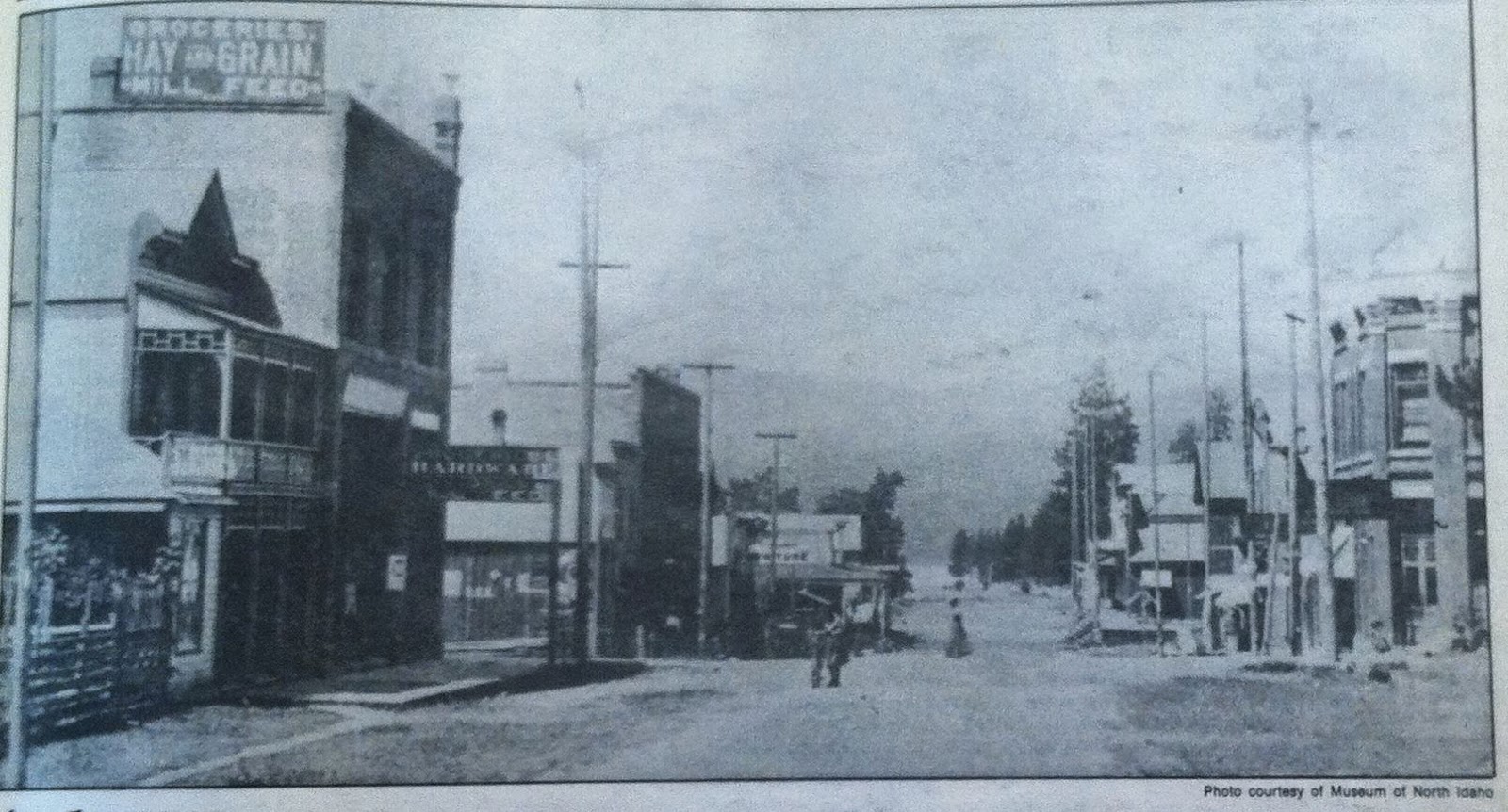
.
Fatty’s habit of disposing of people he didn’t like, or who flaunted their money that Fatty thought should belong to him. Fatty resided in a room over the Spokane River, and if he invited you over for a drink, rumor had it that some folks never made it out alive. Anyone who was giving Fatty trouble or had deep pockets was taken to the river room and dropped through a trap door into the water, never to be seen again.
.
According to local folks, a few of Fatty’s hated customers turned up years later beneath another one of his former cathouses at 4th and Sherman Ave. When construction workers were prepping the foundation for Wilson’s Pharmacy the corpses were found. They were found behind a hidden basement doorway which led to an unused tunnel were the decomposed bodies of 3 unnamed Indians, plus 5 soldiers from Ft. Sherman that had long been listed as deserters. To this day, visitors to that basement say they feel a chill down their spines when they explore the rock-walled room.
.
Skeletons were found in the early 1900’s near Tubbs Hill where Carroll’s Variety sat, buried underneath the lumberyard. Human bones were also found while grading an area in preparation for a train station, only 2 feet deep in the ground underneath Sherman Avenue. Although Fatty was clearly a man for whom murder was an amusing pastime, we can’t pinpoint the killings directly on Mr. Fatty since these types of incidents were commonplace in the gun filled, alcohol-fueled early days of Idaho.
.
Fort Sherman was eventually closed for 2 reasons. First, it wasn’t needed to protect the settlers from the peaceful Indians after all. The second reason was that soldiers kept disappearing in the night, met by an untimely death at the hands of a Fatty henchman or other Wild West hooligans.
.
The new government of Coeur d’Alene was not happy about the wild west image of the downtown Coeur d’Alene area. An incorporation charter was created for Coeur d’Alene and was full of provisions and laws created to stop these problems.
.
The city government made a plan to stop the gambling houses, opium dens, and other disorderly establishments. They created regulations to prohibit gambling and created licensing to regulate dram houses, tippling houses, saloons, gambling houses, theatrical and other amusements, traveling shows, and circuses in town.
.
This was a tough task for the cities regulators. Coeur d’Alene was filled with drinking establishments and dens of gross behavior. Old Crow whiskey was sold by the wagon load at the Transfer Saloon (“The Most Popular Resort in the City”), found at the southwest corner of Sherman Ave. and 3rd St. (now Resort Plaza Shops), which was established by Fort Sherman Major D.E. Ballard, with Stephen G. Whitman serving as bartender. West on Sherman Ave. between 1st and 2nd Streets was the Exchange Saloon, opened by John Dingwell and with whiskey mixologist extraordinaire Henry Farley behind the bar.
.
Further south, between 1st and 2nd street, was the Dividend Saloon on the north side of Lake View Dr. where John H. Brown was the proprietor and Samuel Barlow, bartender. On the northern part of town on Coeur d’Alene Avenue between 2nd and 3rd was the Rathdrum Branch Brewery, owned and operated by W.A. Reininger.
.
The Arcade, located at the corner of 3rd and Sherman, was listed in the city directory as selling wines and liquors. In the Pioneer days of the 1880’s, dining out meant a menu full of items like roast beef and potatoes, boiled cabbage, fried fish, bread and butter, porridges and puddings, and of course a pig’s head with all the trimmings. The Palace Restaurant, located on the north side Sherman between 2nd and 3rd, owned by J.C. Chamberlain. The only other eatery at the time was the Coeur d’Alene Bakery and Restaurant on the south side Sherman between 3rd and 4th, owned by William Wagner.
.
Bender & Dillard Market (proprietors William H. Bender and William Dillard), which sat on 4th Street between Sherman and Front, had a butcher named William Hooper. A.L. Davis ran a livery stable, located on 4th St. between Sherman and Front street where you could keep your horse for the night or rent a horse-and-buggy for an out of town trip. The horses needed horseshoes, and R.R. Mann was the blacksmith in town. Located on the southeast corner of 4th and Sherman (where the Sports Cellar used to be inside the Dingle Building).
.
The only 2 lady proprietors in town were Miss Tilla Ellis and Mrs. Owen Russie made dresses and opened a store on Sherman Avenue at the end where it turned into Fort Sherman. In the 1890’s American women used bolts of thick, wooly fabric for dresses with draping and layers and folds. Bustles around the waist were popular and gave modern gals some serious figure look. The popular colors were black, grey, and black-grey, shirts were buttoned all the way above the neck, and the collars were starchy white.
.
W. Morris made shoes and boots in his store on the southwest corner of 1st and Sherman, and for a hair “fixer-upper” you would go see barber J.C. Scott, located on the east side of 3rd St. between Front and Sherman.
.
When it was time for a wedding you would go to see J.E. Russell, who was the Justice of the Peace (north side of Front Ave between 3rd and 4th, currently Quicksilver Photography). And to capture the moment you had only 2 photographers in town. Henry Purcell’s studio was located next to the dressmaking ladies of Sherman Ave., and W.N. Hall took pictures up at his place on Coeur d’Alene Ave. between 2nd and 3rd Streets.
.
While it was rare in 1887, if you wanted a divorce the only lawyer in town, Issac S. Daly would be the man to file the paperwork and arrange the settlement. The only Doctor in town was Dr. J. McGrail and the DR. had no clinic to go to, but he made house calls to all the locals.
.
For the most part, city residents lived in boarding houses and hotels. The Lake View Hotel was the main residence house, located on the shores of the lake next to the area that is now the 3rd Street Boat launch in McEuen Park. The Cochrane House was on the north side of Sherman Ave. between 2nd and 3rd.
.
Coeur d’Alene Idaho has sure changed drastically, and for the better. Our little town by the lake is a beautiful place to live and raise children. If you have never been to Coeur d’Alene Idaho come and give us a visit. You will be glad you did.
.
Enjoy Coeur d’Alene Idaho
